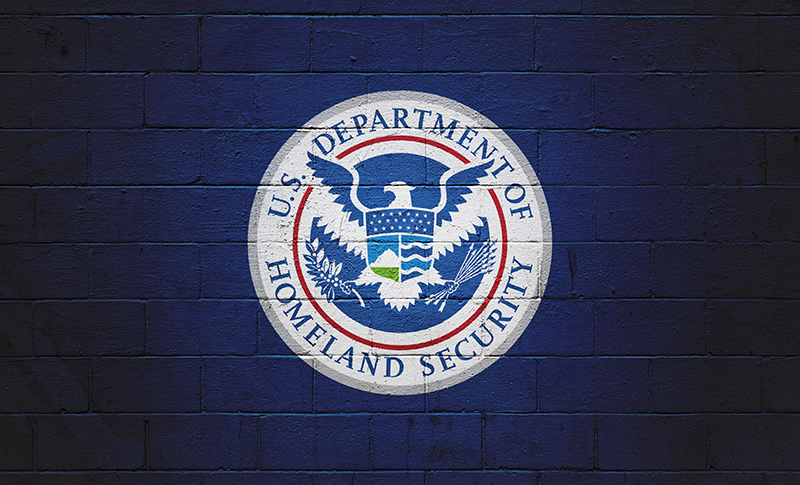95.8 Percent of Illegal Migrants Who Preschedule Their Illegal Entries Are Allowed In
My colleague Todd Bensman this week released the shocking results of a Freedom of Information Act (FOIA) request the Center had filed with DHS, revealing that nearly 250,000 aliens from nearly 100 different countries and territories have been paroled into the United States at the Southwest land border ports after scheduling with the CPB One mobile phone app, through August 2023. You should add them to the millions of other illegal migrants who have been released into the United States under the Biden administration, and now the House Homeland Security Committee (HSC) has reported that 95.8 percent of those who scheduled CBP One app appointments have been waved in with parole and work authorization. The Center’s and HSC’s findings bookend one another, but there are still volumes of questions remaining in between.
The “CBP One App Port Interview Scheme”. The White House laid out its plans to deal with the thousands of aliens expected to enter daily once CDC “Title 42” expulsion orders expired (which occurred on May 11) in a January 5 “fact sheet” captioned “Biden-Harris Administration Announces New Border Enforcement Actions”.
Included under the heading “Expand Legal Pathways for Safe, Orderly, and Humane Migration” was the following:
When Title 42 eventually lifts, noncitizens located in Central and Northern Mexico seeking to enter the United States lawfully through a U.S. port of entry have access to the CBP One mobile application for scheduling an appointment to present themselves for inspection and to initiate a protection claim instead of coming directly to a port of entry to wait. This new feature will significantly reduce wait times and crowds at U.S. ports of entry and allow for safe, orderly, and humane processing.
I’ve dubbed that process the “CBP One app port interview scheme”, and as the Center’s FOIA requests and the HSC report have revealed, the White House’s description of the scheme in its fact sheet is less than factual.
HSC’s Findings. HSC’s data covers a slightly different period of time than the Center’s FOIA disclosures: from January 12, when the CBP One app scheme went live, through the end of last month.
By contrast, the Center’s FOIA disclosures cover the period May 2021 (when an earlier iteration of the scheme was employed for would-be illegal migrants seeking an exemption from Title 42 expulsion) through the end of August.
Consequently, HSC’s data relates to a slightly larger population, 266,846 aliens, all of whom were released into the interior under the current version of the CBP One app port interview scheme.
To put that parole figure into context, that’s more aliens with no permission to enter who were released into the country under this Biden scheme than the current populations of the cities of Boise (240,713), Richmond (226,472), or Baton Rouge (217,665), the capitals of the states of Idaho, Virginia, and Louisiana, respectively.
Total Interviews: The “Key Data Set”. HSC was, however, also able to obtain a key data set the Center has not received yet: The total number of aliens who had scheduled appointments under this scheme.
That’s a “key data set” because comparing the total number of scheduled interviewees against the number of aliens paroled reveals whether CBP officers at the ports were: (1) actively vetting would-be CBP One parolees for terrorist or criminal affiliations and weighing the validity of their so-called “protection claims” before allowing them to enter; or (2) simply waving in the vast majority of those who scheduled appointments on parole.
CBP’s Simply Waving in the Vast Majority of Aliens Who Appeared on Parole. Not surprisingly, the second option is the one the Biden administration appears to have chosen, as the HSC data suggests.
According to the committee, the 266,846 aliens who were issued Notices to Appear (“NTAs”, the charging documents in removal proceedings) and released on parole at the Southwest border ports of entry were culled from a total of “278,431 appointments scheduled”, meaning the parole rate under this scheme was, at a minimum, 95.8 percent of those who scheduled appointments using the app.
I say “at a minimum” because HSC’s data does not apparently distinguish between aliens who appeared for interviews and who were subsequently denied parole and those who scheduled appointments using the app but never appeared.
That’s a salient issue, given that Bensman interviewed migrants in Juarez, Mexico (across the Rio Grande from El Paso, Texas), in April who had scheduled CBP One appointments, but who were instead opting to skip the wait and enter illegally. If they counted as denials, the “success rate” for aliens using the CBP One app port interview scheme could be close to, or even equal, to 100 percent.
Even assuming that the committee data as provided by the administration relates solely to aliens who appeared, however, it still raises a number of questions.
As HSC notes: “Out of 58,772 appointments made by Mexican nationals, 55,099 were released on parole, a rate of 93 percent.” That’s concerning, given the fact that there are nearly 130 million people living in Mexico, the vast majority of whom could apparently roll right in and start working here thanks to CBP One.
It’s also confusing, however, because the January 5 White House fact sheet indicates that the whole purpose of this scheme is to permit would-be illegal migrants “to initiate a protection claim”.
According to DOJ, immigration judges (IJs) granted asylum to just 4 percent of Mexican nationals who sought that protection in the first half of FY 2023. In light of that, why were 93 percent of Mexican CBP One applicants waved in, and did anyone even ask if they had asylum claims before they were paroled?
Similarly, 55,690 out of 57,381 Venezuelan nationals who scheduled appointments were paroled in, a 97 percent parole rate, and yet the IJ grant rate for Venezuelan asylum claims in the first six months of FY 2023 was just 29 percent. Were their claims even screened before they were allowed to enter?
Similarly, 96 percent of Honduran nationals and 94 percent of Guatemala nationals who scheduled CBP One port appointments received parole, even though the IJ asylum grant rate for nationals of those countries was just 7 percent and 8 percent, respectively.
What About Expedited Removal? Normally, such aliens appearing at the ports without entry documents would be subject to expedited removal under section 235(b)(1) of the Immigration and Nationality Act (INA), allowing DHS to quickly expel them.
As I have explained numerous times in the past, however, there is an exception under expedited removal for aliens who either claim a fear of harm if returned or request asylum. Those aliens are by statute to be referred to USCIS asylum officers (AOs) to assess whether they have a “credible fear of persecution”.
Credible fear is defined as “a significant possibility, taking into account the credibility of the statements made by the alien in support of the alien’s claim and such other facts as are known to the officer, that the alien could establish eligibility for asylum”, and as that definition suggests, the bar is not high.
That’s why, again according to DOJ, “just” 83 percent of aliens subject to expedited removal who made fear claims between FY 2008 and FY 2019 received a positive credible fear finding. That’s still a large percentage, given that less than 17 percent of those aliens ultimately received asylum, but it’s nowhere near the 93 to 98 percent approval rate for CBP One app approvals reflected in the HSC data.
That January 5 White House fact sheet promised to expand the use of expedited removal, and DHS Secretary Alejandro Mayorkas doubled down on that claim, vowing in a May 11 White House press conference announcing his department’s post-Title 42 plans that: “The vast majority of individuals will indeed be placed in expedited removal, and if they do not qualify, will be removed in a matter of days, if not weeks, from the United States.”
That’s plainly not happening with respect to the illegal entrants Border Patrol is processing. Of the more than 218,000 aliens whom agents apprehended last month, just 21,330 — 9.75 percent — were subjected to expedited removal.
And it doesn’t appear to be happening at the ports, either. If none of those CBP One app aliens are being screened for asylum claims, this scheme is simply an attempt to funnel workers into the United States — not aliens seeking or eligible for humanitarian protection, regardless of how the White House spins it.
CBP One Is “Encouraging” Even More Illegal Migration. As Bensman has noted, the municipal director of migration for Tijuana, Enrique Lucero, publicly stated in February that he believed the CBP One port app interview scheme “has “encouraged migration”, adding: “It looks easier to have an appointment. Yes, we have seen people who arrive with that expectation.”
It’s no wonder migrants are coming illegally to the border with the expectation of being allowed to enter under the administration’s CBP One app port interview scheme, when that’s exactly what’s happening 95.8 percent of the time. The Homeland Security Committee’s data bookends the Center’s, and now it must figure out what is happening during those so-called port “interviews”. Whatever it is makes no sense — and isn’t legal, either.





